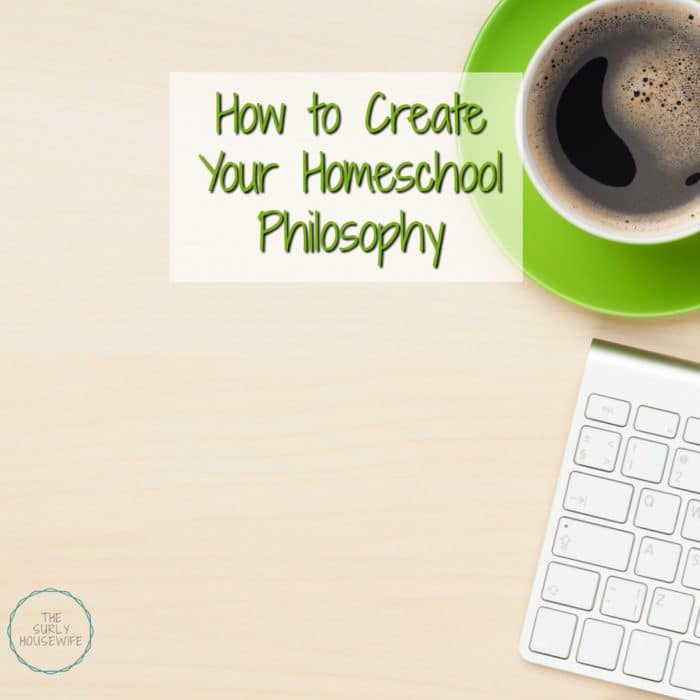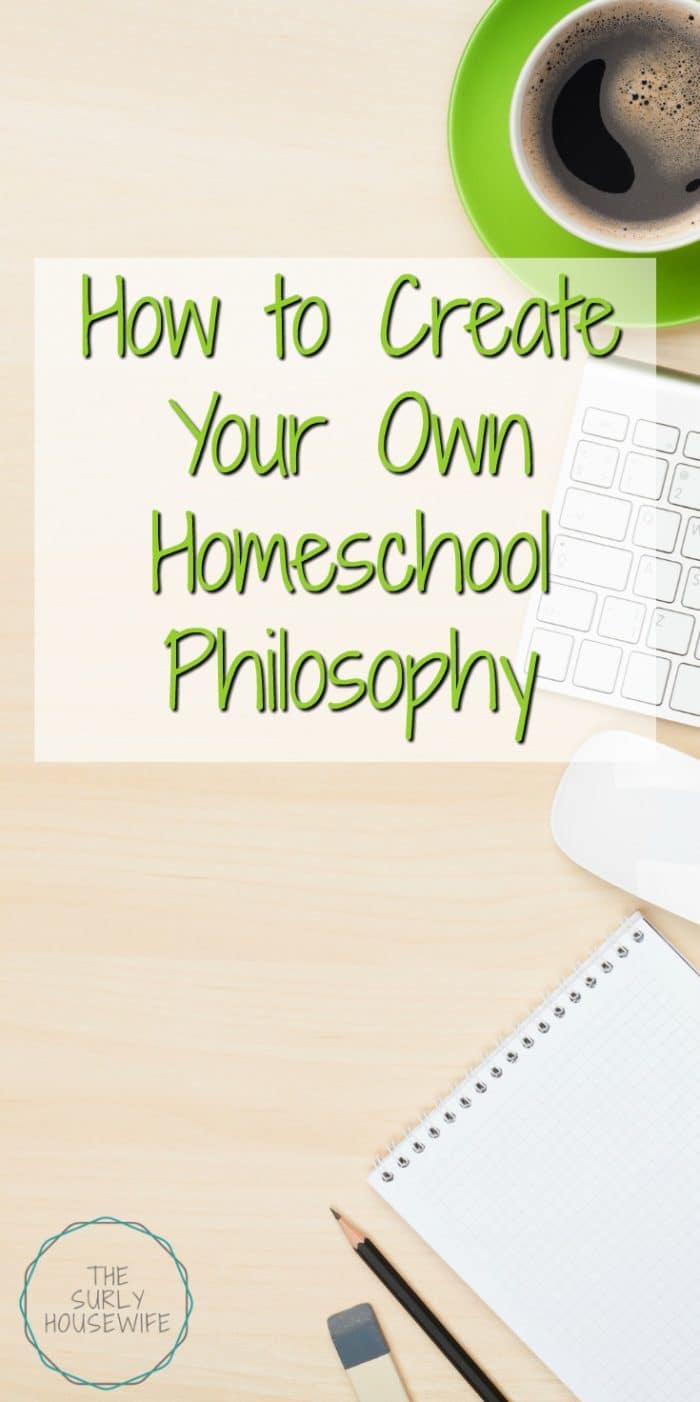Four simple steps to creating your own homeschool philosophy!

My husband and I probably put more time into making the decision to homeschool our kids than the decision to actually HAVE the kids. Well maybe just the second kid. There was no discussion there. Aaaaanyway, every family has their own reasons for homeschooling. I personally think everyone should do it! More on that in this post.
Homeschooling is a big decision that should not be taken lightly. You are now the teacher and you need come up with an educational plan for your kids. This can be very overwhelming and your first reaction may be to PANIC, but once you develop a homeschool philosophy, a broad, long-term goal for your homeschooling, everything will fall into place. Here is how you do it!
How to Create Your Own Homeschool Philosophy
Step 1: What are the homeschooling laws in your state?
Before you can plan any curriculum, find out what your state requires of homeschoolers. Some states have mandated state testing. Others require the parent to have a college degree. In order to keep your homeschooling freedoms you must adhere to the states requirements.
Our family is very lucky in that we live in Wisconsin which has one of the most reasonable homeschooling laws. There is no testing required and we do not need to follow the school districts curriculum. What IS required is 875 hours of instruction between the ages of 6 and 18, along with a plan of instruction. It is a blessing to have such freedom but a lot of stress comes with it. Because our state requires no testing and has no curriculum to follow, I have to develop our own. Now how am I supposed to do that.
This post contains affiliate links. If you click and make a purchase, we earn a commission at NO extra cost to you. For more information, please read my full disclosure policy.
Step 2 – Research Research Research
The library is also a fantastic place to start. Some amazing books about homeschooling have been written over the years. Home Learning Year by Year: How to Design a Homeschool Curriculum from Preschool Through High School is one as well as Homeschooling the Early Years. Not only does the library have homeschooling resources, they can point you in the direction of the local homeschooling group. Then you can connect with other homeschoolers to find out about social activities and co-ops.
Continue your research with methods of instruction, learning about the typical day of a homeschooler, and any other books homeschoolers recommend. If you are like me, then you will have a mish mash of all sorts of information and not know how to connect all of it.
Step 3 – Method of instruction
During my research, I was reading the common core standards for each grade. I was an education major in college and that is what we were taught to start your instruction from. As I was reading them, I thought to myself, “I don’t want to teach my kids this way. I may as well send them to school!” But what other ways are there?
I was at a stand still at this point, curriculum wise, but luckily one of the books I had checked out from the library had an “Approach to Learning” quiz. It included 8 methods of instruction (traditional, Charlotte Mason, classical, unit study, unschooling, independent study, eclectic, and umbrella program) and 31 “I prefer” questions relating to scheduling, curriculum, grammar, field trips, etc. You can read more about these methods in Cathy Duffy’s book “100 Top Picks for Homeschool Curriculum.”
After completing the quiz and using the formula given, you will have a better understanding of which method of instruction will suit your family. We scored somewhere between unit study and unschooling, which basically means our ideal teaching setting would be a “classroom” setting enriched with real world experiences.
Step 4 – Educational Philosophy
An educational philosophy is a broad, long-term goal or outcome for your homeschooling. (I think some people may have this defined before figuring their method of instruction, but this is the way it happened for our family.) I would define ours as exposing our children be to many different subjects to help them find their niche in life and instill in them a love of learning. This is our basic, overarching goal and I’m certain the way to meet that goal will change from year to year. It is our jumping off point and a place to begin.

